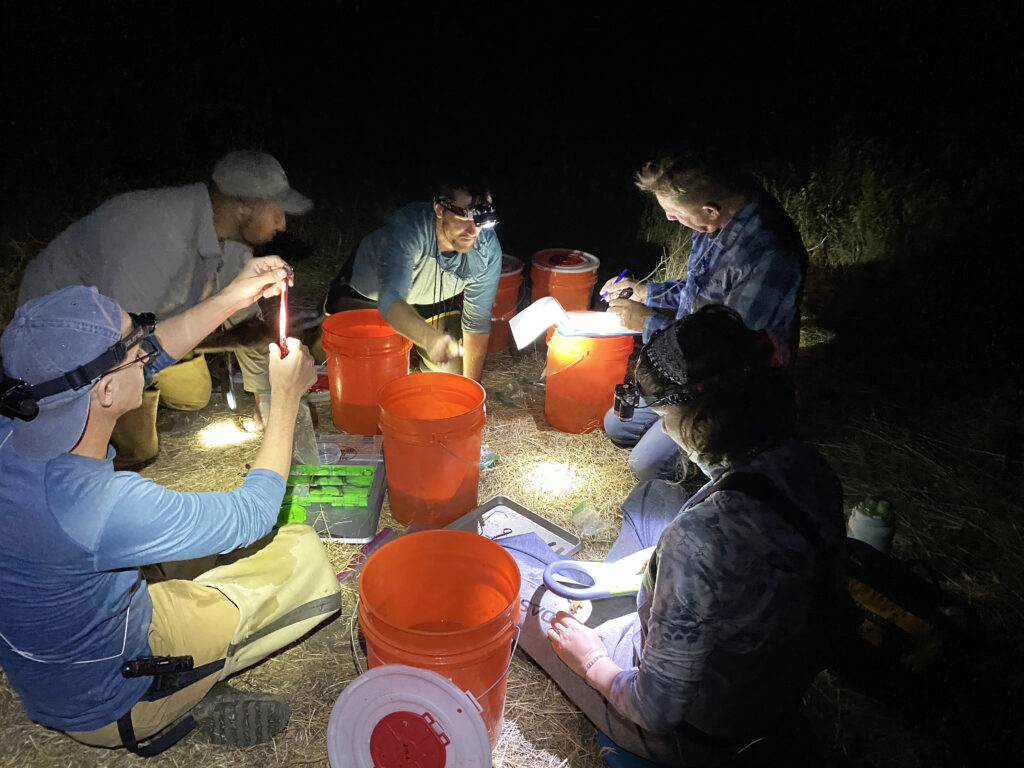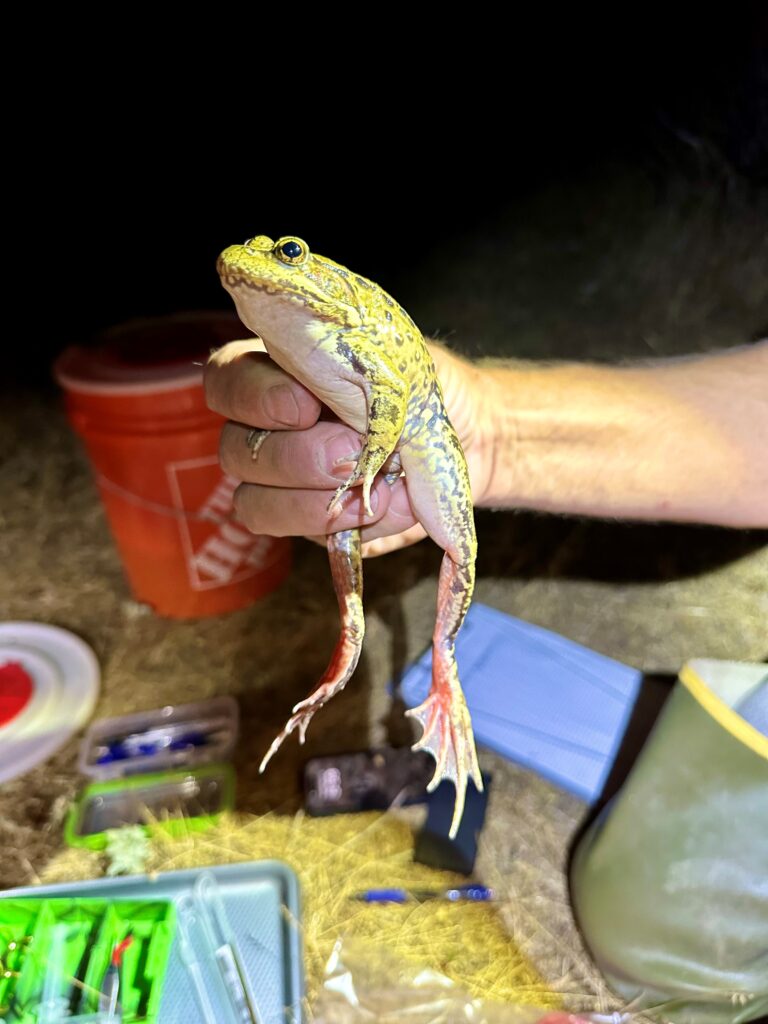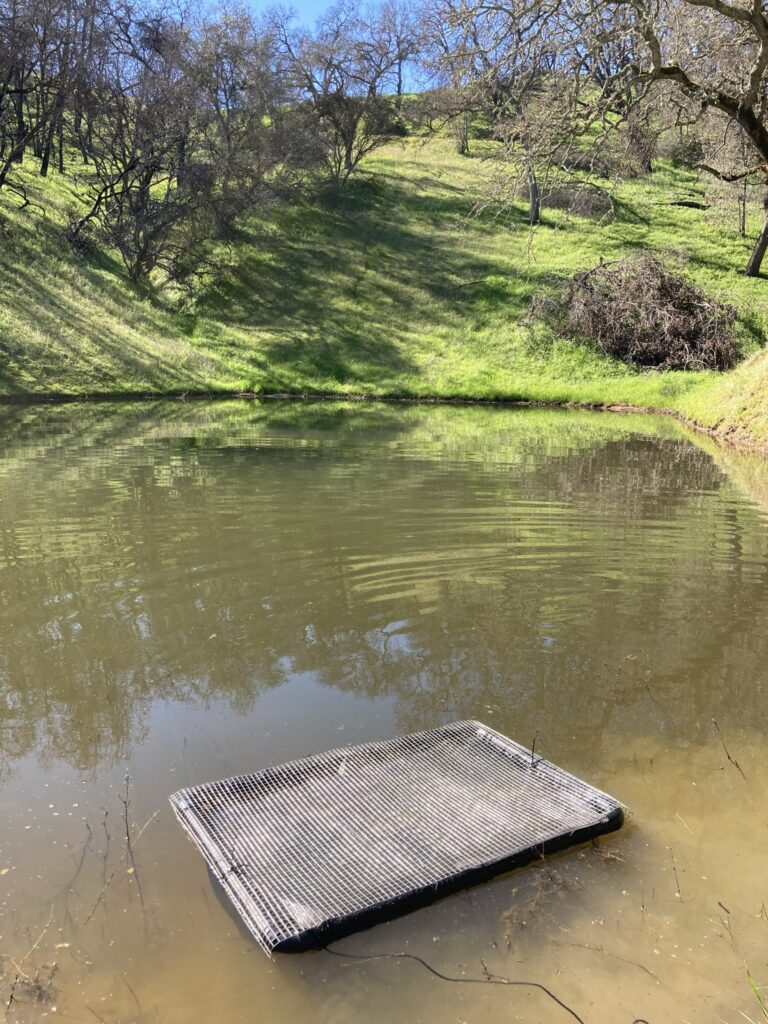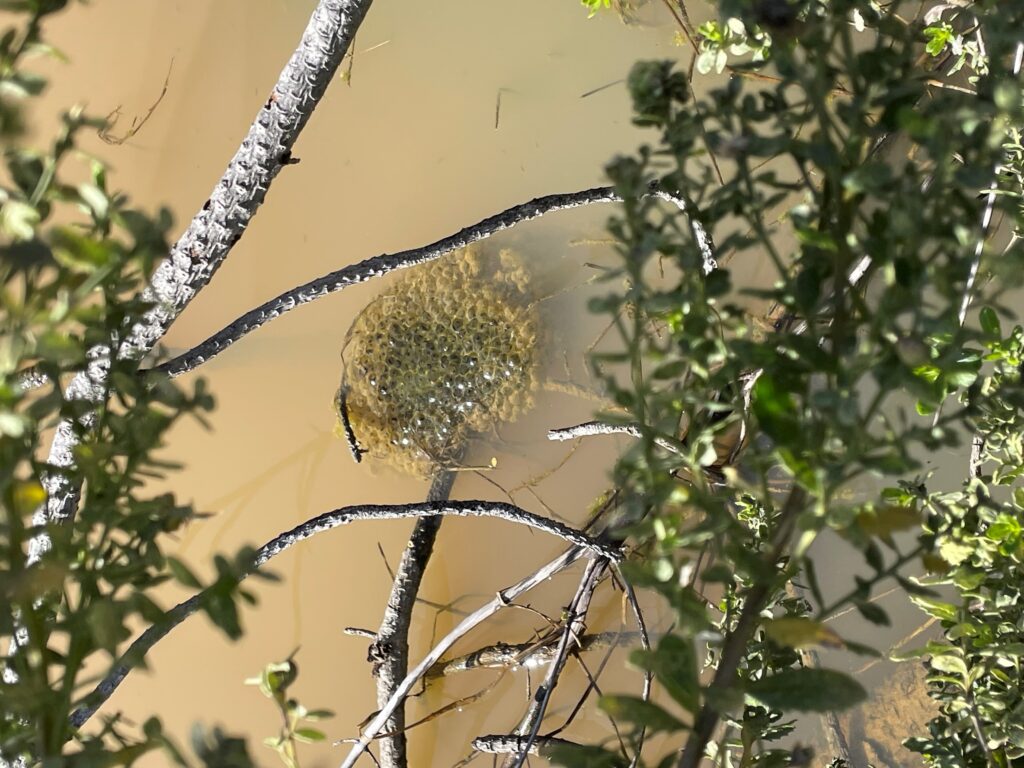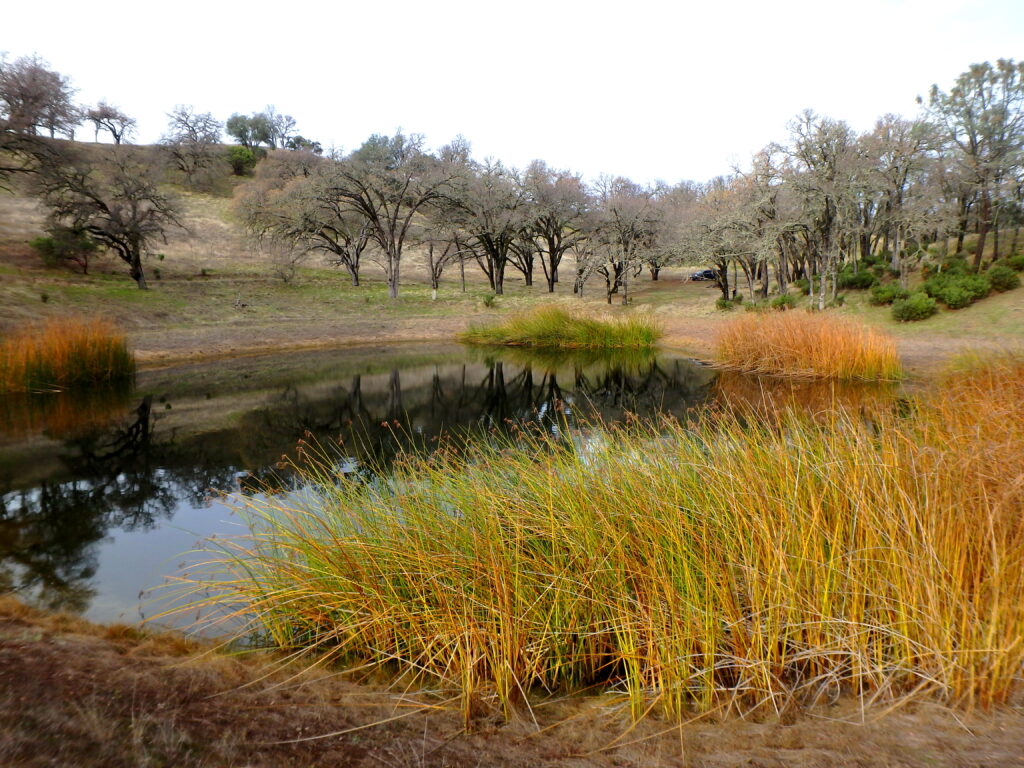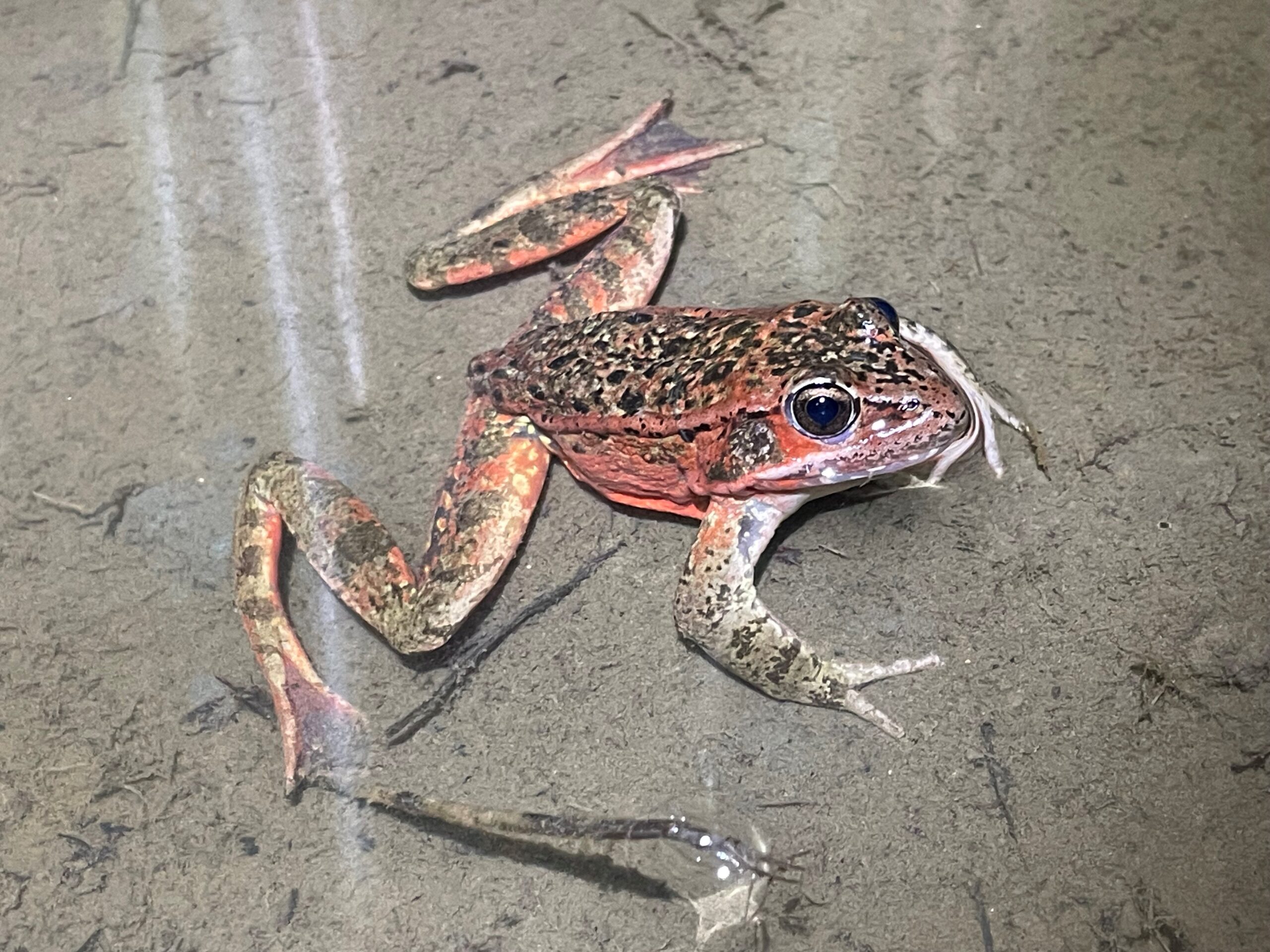In February of 2022, the Land Trust of Napa County began work on a major endangered species conservation effort within a 2,000-acre wildland preserve in southeastern Napa County. The project focuses on restoration of the California red-legged frog, a species listed as Threatened under the federal Endangered Species Act. The red-legged frog is the largest frog native to California, but is no longer found in 70% of its native range, primarily due to habitat loss and the introduction of invasive species.
This restoration project is funded by an Endangered Species Conservation and Recovery Program grant from the U.S. Fish and Wildlife Service and California Department of Fish and Wildlife. The permanently protected property contains U.S. Fish and Wildlife Service-designated critical habitat for red-legged frogs, and lies within a recognized Core Recovery Area for the species. Project activities include translocation of partial egg masses from a Fish and Wildlife Service-approved donor site into high quality pond habitat on the preserve, upland habitat enhancement, tagging and tracking of individual frogs, and botanical surveys to track post-fire changes in habitat structure. Land Trust of Napa County partners with consulting biologist and red-legged frog expert Jeff Alvarez of The Wildlife Project.
A year and half after its initiation, the project is yielding significant initial successes. Portions of four egg masses were translocated from ponds within the Mitsui Ranch Preserve near Petaluma into the three ponds on the Land Trust property. The eggs were placed in the ponds within specialized enclosures designed to protect both the eggs and young tadpoles from predators. In early spring of 2023, portions of six additional egg masses were translocated and produced over 1,500 larvae. Thanks to the enclosures and an abundance of food resources, survival rates have been up to six times higher than other red-legged frog restoration efforts. Thousands of eggs hatched, and hundreds of tadpoles survived to metamorphose into sub-adult frogs in all three ponds.
These post-metamorphic frogs are caught and marked with a specialized tracking device referred to as Passive Integrated Transponder tags that allow the project team to study movement patterns and habitat use. Frogs captured and marked in their first year of life are tracked through time. If and when they move, the tag tells researchers which frog it is and where they started life as an egg.
In the first two years, over 800 individual frogs transformed from tadpoles and were tagged. “We are still early in this project, so the results are still preliminary, but this is the highest success rate so far in a restoration project for this species,” said Alvarez. “Several translocation projects for California red-legged frog have been conducted in various parts of the State, but no other project has reported so many frogs becoming successfully established.”
“We are very pleased to be part of this important project,” says Land Trust Stewardship Director Mike Palladini. “This has been an outstanding opportunity to utilize our protected wildlands to support native biodiversity through endangered species conservation and recovery. Jeff’s knowledge and experience with red-legged frogs is a large part of the project’s success. We are grateful for the funding support we’ve received through the Endangered Species Conservation and Recovery Program (ESCRP).”
“The primary objective of the ESCRP grant program is to conserve and recover federally threatened and endangered inland fish and wildlife species,” said California Department of Fish and Wildlife (CDFW) Biologist Brian Shelton. The CDFW partnership with the Napa Land Trust has made it possible to create additional red-legged frog breeding ponds where we didn’t have them before. The success of these ponds is remarkable, and future projects like this will assist in the recovery of these threatened species.”
The project also includes surveys for additional species of conservation concern. In addition to red-legged frogs, these surveys have found a number of other species with a special conservation status due to their declining populations. These include foothill yellow-legged frog, Townsend’s big-eared bat, western red bat, long-eared myotis, and yellow-breasted chat.
“We were excited to purchase and permanently protect this property five years ago,” said Palladini. “This restoration project demonstrates how important it is to go beyond solely the acquisition of important natural areas. With carefully planned and implemented restoration efforts, protected areas like this one harbor the potential to counteract negative trends for native species that have been in decline for many years.”
UPDATE: Land Trust staff observed the first wild egg masses in wetlands on our preserve. The masses were produced by mature frogs that developed from eggs translocated in 2021. We observed egg masses in multiple ponds. It now appears we have a newly established reproductive population of red-legged frogs on the preserve.
